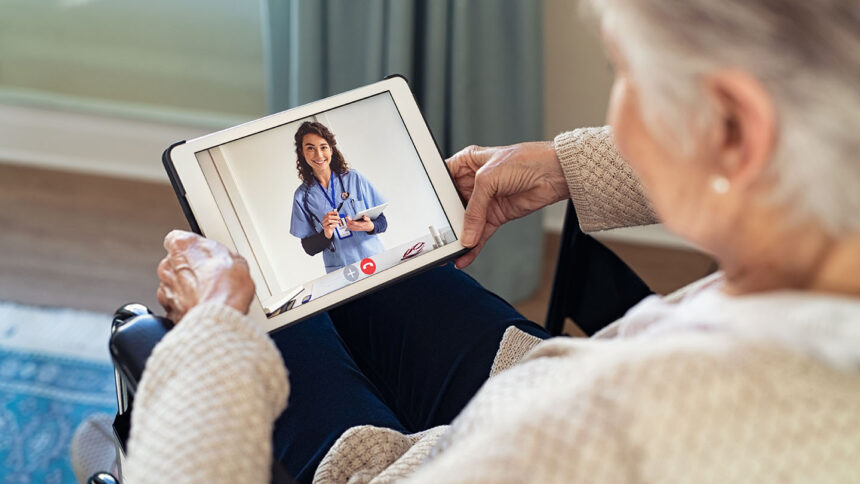
During the height of the COVID pandemic, telehealth experienced prolific skilled nursing penetration — jumping from 5% of all facilities in 2019 to nearly 92% in 2020. By mid-2020, it remained active in a little more than 60% of nursing homes, according to a JAMA Network Open study published this fall.
But telehealth continues to earn accolades for promoting greater access to doctors and improving outcomes and patient satisfaction for everything from stroke rehab to dementia care.
“The kind of services telehealth provides to patients are limitless,” said Kyle Zebley, senior vice president of the American Telemedicine Association, noting its use in therapy, diagnostics and even dialysis.
One promising application caught the interest of David Chess, MD, founder and chief health and public policy officer of Tapestry Health, which generated buzz by integrating a network of practitioners to support its freestanding telemedicine hardware inside nursing homes.
“We believe that passive vitals monitoring can be a real game changer, allowing us to pick up changes in condition and early disease process to intervene and prevent disability and hospitalization,” said Chess.
There’s also plenty of interest in telehealth’s potential to help fill the vacuum created by workforce shortages.
Despite the industry’s hangover from the 2020 surge, Chess said he remains optimistic about behavioral and after-hours interventions for facilities, and the current pace of innovation in optics and embedded technologies. Still, challenges remain.
“Many providers, clinicians and residents and their families are not yet ready for virtual care,” said Allison Rainey, MatrixCare’s head of nursing and clinical informatics. “The general culture still promotes a more traditional care model.”
Zebley said hurdles include needed investment, required education and looming questions over standards of care. There also are thorny public policy issues to navigate and outdated laws and regulations to overcome.
At press time, Medicare had announced plans to finalize expanded coverage for telehealth services in 2024.
From the December 2023 Issue of McKnight's Long-Term Care News



